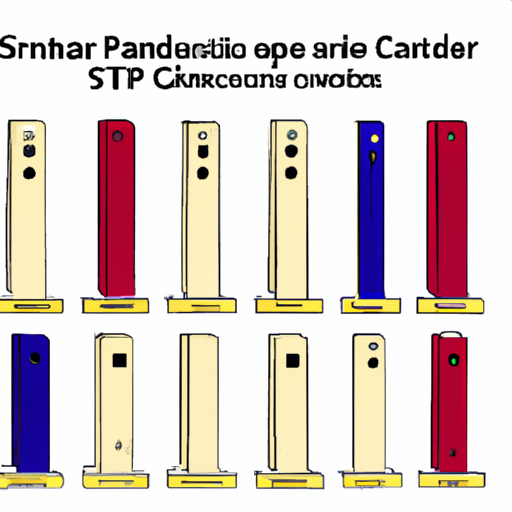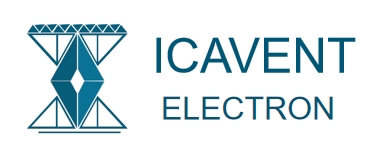What are the Product Standards for Capacitor Cabinets?

I. Introduction
Capacitor cabinets are essential components in electrical systems, primarily used for power factor correction and voltage regulation. These cabinets house capacitors and associated equipment that help improve the efficiency of electrical systems by reducing reactive power and stabilizing voltage levels. Given their critical role in electrical infrastructure, adhering to product standards is paramount. This article aims to explore the product standards for capacitor cabinets, highlighting their importance, key standards, specific requirements, testing processes, challenges, and future trends.
II. Understanding Capacitor Cabinets
A. Function and Purpose of Capacitor Cabinets
Capacitor cabinets serve two primary functions: power factor correction and voltage regulation.
1. **Power Factor Correction**: In electrical systems, the power factor is a measure of how effectively electrical power is being converted into useful work output. A low power factor indicates that a significant amount of reactive power is present, which can lead to inefficiencies and increased energy costs. Capacitor cabinets help improve the power factor by supplying reactive power, thus reducing the load on generators and transformers.
2. **Voltage Regulation**: Capacitor cabinets also play a crucial role in maintaining voltage levels within acceptable limits. By compensating for voltage drops in the system, they ensure that electrical equipment operates efficiently and reliably.
B. Components of Capacitor Cabinets
Capacitor cabinets consist of several key components:
1. **Capacitors**: The primary component, capacitors store electrical energy and release it when needed to improve power factor and voltage stability.
2. **Switchgear**: This includes circuit breakers and disconnect switches that control the flow of electricity and protect the system from faults.
3. **Protection Devices**: These devices, such as fuses and relays, safeguard the capacitors and other components from overcurrent and short-circuit conditions.
4. **Control Systems**: Automated control systems monitor the electrical parameters and adjust the operation of the capacitors to optimize performance.
III. Importance of Product Standards
Product standards are critical in ensuring the safety, reliability, and efficiency of capacitor cabinets.
A. Ensuring Safety and Reliability
Standards provide guidelines for the design, construction, and testing of capacitor cabinets, ensuring that they can operate safely under various conditions. Compliance with these standards minimizes the risk of electrical failures, which can lead to equipment damage or safety hazards.
B. Enhancing Performance and Efficiency
By adhering to established performance criteria, manufacturers can produce capacitor cabinets that operate at optimal efficiency. This not only benefits the end-users through reduced energy costs but also contributes to the overall stability of the electrical grid.
C. Facilitating International Trade and Compliance
In a globalized market, compliance with international standards is essential for manufacturers looking to export their products. Adhering to recognized standards simplifies the process of entering new markets and ensures that products meet the necessary regulatory requirements.
D. Protecting the Environment
Standards often include guidelines for minimizing environmental impact, such as energy efficiency and waste management. By following these standards, manufacturers can contribute to sustainability efforts and reduce their carbon footprint.
IV. Key Product Standards for Capacitor Cabinets
A. International Standards
1. **IEC (International Electrotechnical Commission)**:
- **IEC 60831**: This standard covers shunt capacitors for power systems, specifying requirements for their design, testing, and performance.
- **IEC 61921**: This standard pertains to capacitor units, detailing the performance and safety requirements for capacitor assemblies.
2. **ISO (International Organization for Standardization)**:
- **ISO 9001**: This standard focuses on quality management systems, ensuring that manufacturers maintain consistent quality in their products and services.
B. National Standards
1. **ANSI (American National Standards Institute)**:
- **ANSI C37**: This standard outlines the requirements for switchgear, which is a critical component of capacitor cabinets.
2. **UL (Underwriters Laboratories)**:
- **UL 810**: This standard specifies safety requirements for capacitors, ensuring that they meet rigorous safety criteria.
C. Regional Standards
1. **European Union Standards**: Compliance with CE marking requirements is essential for products sold in the EU, indicating conformity with health, safety, and environmental protection standards.
2. **Other Regional Compliance Requirements**: Various regions may have specific standards that manufacturers must adhere to, depending on local regulations.
V. Specific Requirements in Product Standards
A. Electrical Performance Criteria
1. **Voltage Ratings**: Capacitor cabinets must be designed to operate at specified voltage levels, ensuring they can handle the electrical demands of the system.
2. **Current Ratings**: The current-carrying capacity of the components must be defined to prevent overheating and potential failures.
3. **Power Factor Specifications**: Standards often specify acceptable power factor levels to ensure efficient operation.
B. Mechanical and Environmental Considerations
1. **Enclosure Ratings (IP Ratings)**: The ingress protection (IP) rating indicates the cabinet's ability to resist dust and moisture, which is crucial for outdoor installations.
2. **Temperature and Humidity Resistance**: Standards may specify the operating temperature range and humidity levels to ensure reliable performance in various environments.
C. Safety and Protection Measures
1. **Overcurrent Protection**: Capacitor cabinets must include mechanisms to protect against excessive current, which can cause damage.
2. **Short-Circuit Protection**: Standards require that cabinets have features to handle short-circuit conditions safely.
3. **Grounding Requirements**: Proper grounding is essential for safety and to prevent electrical shock hazards.
VI. Testing and Certification Processes
A. Overview of Testing Procedures
1. **Type Testing**: This involves comprehensive testing of the capacitor cabinet design to ensure it meets all specified standards before it goes into production.
2. **Routine Testing**: Ongoing testing of production units ensures that each cabinet meets the required standards and specifications.
B. Certification Bodies and Their Roles
1. **National and International Certification Organizations**: These bodies evaluate and certify products based on compliance with relevant standards, providing assurance to manufacturers and consumers.
2. **Importance of Third-Party Testing**: Independent testing by third-party organizations adds credibility to the certification process and ensures unbiased results.
VII. Challenges in Compliance with Product Standards
A. Variability in Standards Across Regions
Manufacturers often face challenges due to differing standards in various regions, which can complicate the design and certification process.
B. Keeping Up with Technological Advancements
As technology evolves, standards must also adapt. Manufacturers need to stay informed about changes to ensure compliance with the latest requirements.
C. Cost Implications for Manufacturers
Compliance with standards can involve significant costs, including testing, certification, and potential redesigns. Manufacturers must balance these costs with the benefits of compliance.
VIII. Future Trends in Capacitor Cabinet Standards
A. Increasing Focus on Sustainability
As environmental concerns grow, there is a trend towards developing standards that emphasize sustainability and energy efficiency in capacitor cabinets.
B. Integration of Smart Technologies
The rise of smart grid technologies is influencing standards, with a focus on integrating advanced monitoring and control systems into capacitor cabinets.
C. Evolving Safety Regulations
As safety concerns continue to evolve, standards will likely become more stringent, requiring manufacturers to enhance safety features in their products.
IX. Conclusion
In conclusion, product standards for capacitor cabinets play a vital role in ensuring safety, reliability, and efficiency in electrical systems. By adhering to these standards, manufacturers can produce high-quality products that meet the needs of consumers while contributing to the overall stability of the electrical grid. It is essential for manufacturers and stakeholders to prioritize compliance with these standards to foster a safer and more efficient electrical infrastructure.
X. References
- IEC 60831 - Shunt capacitors
- IEC 61921 - Capacitor units
- ISO 9001 - Quality management systems
- ANSI C37 - Switchgear standards
- UL 810 - Capacitors
- CE marking requirements for the European Union
This comprehensive overview of product standards for capacitor cabinets highlights the importance of compliance in ensuring safety, performance, and environmental responsibility. For further reading, stakeholders are encouraged to explore the listed standards and guidelines to deepen their understanding of this critical aspect of electrical engineering.
What are the Product Standards for Capacitor Cabinets?

I. Introduction
Capacitor cabinets are essential components in electrical systems, primarily used for power factor correction and voltage regulation. These cabinets house capacitors and associated equipment that help improve the efficiency of electrical systems by reducing reactive power and stabilizing voltage levels. Given their critical role in electrical infrastructure, adhering to product standards is paramount. This article aims to explore the product standards for capacitor cabinets, highlighting their importance, key standards, specific requirements, testing processes, challenges, and future trends.
II. Understanding Capacitor Cabinets
A. Function and Purpose of Capacitor Cabinets
Capacitor cabinets serve two primary functions: power factor correction and voltage regulation.
1. **Power Factor Correction**: In electrical systems, the power factor is a measure of how effectively electrical power is being converted into useful work output. A low power factor indicates that a significant amount of reactive power is present, which can lead to inefficiencies and increased energy costs. Capacitor cabinets help improve the power factor by supplying reactive power, thus reducing the load on generators and transformers.
2. **Voltage Regulation**: Capacitor cabinets also play a crucial role in maintaining voltage levels within acceptable limits. By compensating for voltage drops in the system, they ensure that electrical equipment operates efficiently and reliably.
B. Components of Capacitor Cabinets
Capacitor cabinets consist of several key components:
1. **Capacitors**: The primary component, capacitors store electrical energy and release it when needed to improve power factor and voltage stability.
2. **Switchgear**: This includes circuit breakers and disconnect switches that control the flow of electricity and protect the system from faults.
3. **Protection Devices**: These devices, such as fuses and relays, safeguard the capacitors and other components from overcurrent and short-circuit conditions.
4. **Control Systems**: Automated control systems monitor the electrical parameters and adjust the operation of the capacitors to optimize performance.
III. Importance of Product Standards
Product standards are critical in ensuring the safety, reliability, and efficiency of capacitor cabinets.
A. Ensuring Safety and Reliability
Standards provide guidelines for the design, construction, and testing of capacitor cabinets, ensuring that they can operate safely under various conditions. Compliance with these standards minimizes the risk of electrical failures, which can lead to equipment damage or safety hazards.
B. Enhancing Performance and Efficiency
By adhering to established performance criteria, manufacturers can produce capacitor cabinets that operate at optimal efficiency. This not only benefits the end-users through reduced energy costs but also contributes to the overall stability of the electrical grid.
C. Facilitating International Trade and Compliance
In a globalized market, compliance with international standards is essential for manufacturers looking to export their products. Adhering to recognized standards simplifies the process of entering new markets and ensures that products meet the necessary regulatory requirements.
D. Protecting the Environment
Standards often include guidelines for minimizing environmental impact, such as energy efficiency and waste management. By following these standards, manufacturers can contribute to sustainability efforts and reduce their carbon footprint.
IV. Key Product Standards for Capacitor Cabinets
A. International Standards
1. **IEC (International Electrotechnical Commission)**:
- **IEC 60831**: This standard covers shunt capacitors for power systems, specifying requirements for their design, testing, and performance.
- **IEC 61921**: This standard pertains to capacitor units, detailing the performance and safety requirements for capacitor assemblies.
2. **ISO (International Organization for Standardization)**:
- **ISO 9001**: This standard focuses on quality management systems, ensuring that manufacturers maintain consistent quality in their products and services.
B. National Standards
1. **ANSI (American National Standards Institute)**:
- **ANSI C37**: This standard outlines the requirements for switchgear, which is a critical component of capacitor cabinets.
2. **UL (Underwriters Laboratories)**:
- **UL 810**: This standard specifies safety requirements for capacitors, ensuring that they meet rigorous safety criteria.
C. Regional Standards
1. **European Union Standards**: Compliance with CE marking requirements is essential for products sold in the EU, indicating conformity with health, safety, and environmental protection standards.
2. **Other Regional Compliance Requirements**: Various regions may have specific standards that manufacturers must adhere to, depending on local regulations.
V. Specific Requirements in Product Standards
A. Electrical Performance Criteria
1. **Voltage Ratings**: Capacitor cabinets must be designed to operate at specified voltage levels, ensuring they can handle the electrical demands of the system.
2. **Current Ratings**: The current-carrying capacity of the components must be defined to prevent overheating and potential failures.
3. **Power Factor Specifications**: Standards often specify acceptable power factor levels to ensure efficient operation.
B. Mechanical and Environmental Considerations
1. **Enclosure Ratings (IP Ratings)**: The ingress protection (IP) rating indicates the cabinet's ability to resist dust and moisture, which is crucial for outdoor installations.
2. **Temperature and Humidity Resistance**: Standards may specify the operating temperature range and humidity levels to ensure reliable performance in various environments.
C. Safety and Protection Measures
1. **Overcurrent Protection**: Capacitor cabinets must include mechanisms to protect against excessive current, which can cause damage.
2. **Short-Circuit Protection**: Standards require that cabinets have features to handle short-circuit conditions safely.
3. **Grounding Requirements**: Proper grounding is essential for safety and to prevent electrical shock hazards.
VI. Testing and Certification Processes
A. Overview of Testing Procedures
1. **Type Testing**: This involves comprehensive testing of the capacitor cabinet design to ensure it meets all specified standards before it goes into production.
2. **Routine Testing**: Ongoing testing of production units ensures that each cabinet meets the required standards and specifications.
B. Certification Bodies and Their Roles
1. **National and International Certification Organizations**: These bodies evaluate and certify products based on compliance with relevant standards, providing assurance to manufacturers and consumers.
2. **Importance of Third-Party Testing**: Independent testing by third-party organizations adds credibility to the certification process and ensures unbiased results.
VII. Challenges in Compliance with Product Standards
A. Variability in Standards Across Regions
Manufacturers often face challenges due to differing standards in various regions, which can complicate the design and certification process.
B. Keeping Up with Technological Advancements
As technology evolves, standards must also adapt. Manufacturers need to stay informed about changes to ensure compliance with the latest requirements.
C. Cost Implications for Manufacturers
Compliance with standards can involve significant costs, including testing, certification, and potential redesigns. Manufacturers must balance these costs with the benefits of compliance.
VIII. Future Trends in Capacitor Cabinet Standards
A. Increasing Focus on Sustainability
As environmental concerns grow, there is a trend towards developing standards that emphasize sustainability and energy efficiency in capacitor cabinets.
B. Integration of Smart Technologies
The rise of smart grid technologies is influencing standards, with a focus on integrating advanced monitoring and control systems into capacitor cabinets.
C. Evolving Safety Regulations
As safety concerns continue to evolve, standards will likely become more stringent, requiring manufacturers to enhance safety features in their products.
IX. Conclusion
In conclusion, product standards for capacitor cabinets play a vital role in ensuring safety, reliability, and efficiency in electrical systems. By adhering to these standards, manufacturers can produce high-quality products that meet the needs of consumers while contributing to the overall stability of the electrical grid. It is essential for manufacturers and stakeholders to prioritize compliance with these standards to foster a safer and more efficient electrical infrastructure.
X. References
- IEC 60831 - Shunt capacitors
- IEC 61921 - Capacitor units
- ISO 9001 - Quality management systems
- ANSI C37 - Switchgear standards
- UL 810 - Capacitors
- CE marking requirements for the European Union
This comprehensive overview of product standards for capacitor cabinets highlights the importance of compliance in ensuring safety, performance, and environmental responsibility. For further reading, stakeholders are encouraged to explore the listed standards and guidelines to deepen their understanding of this critical aspect of electrical engineering.













